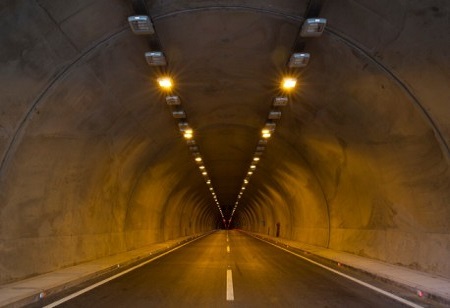At an estimated cost of ₹1.05 lakh crore, the Mumbai Metropolitan Region Development Authority (MMRDA) is constructing 70 km of underground tube corridors to create a "third mode of urban movement" in the metropolis. The initial 16-kilometer phase of this project will connect Worli with the second terminal of Chhatrapati Shivaji Maharaj International Airport.
According to officials, the tunnels will help reduce traffic jams and congestion while enhancing the two current modes of transportation—roadways and railways. The MMRDA has authorized the hiring of a consultant to conduct a techno-economic feasibility assessment and prepare a comprehensive project report for the planned tunnel network, which will be based on future
mobility requirements and traffic demand.
“Mumbai’s transformation into a
global economic powerhouse depends on its ability to move people and goods efficiently. The proposed tunnel network is a major leap toward achieving seamless, multi-level connectivity across the city by integrating roads, metro, coastal corridors, and now an underground tunnel grid,” Chief Minister Devendra Fadnavis said. “This project will decongest arterial routes and make commuting across Mumbai faster, safer, and smoother.”
At a projected cost of ₹66,000 crore, the project’s longest tunnel, measuring 44 km, will connect Borivali and South Mumbai. The third phase of the project will involve work on this tunnel, which is expected to have several entry and exit points. According to sources, the tunnel will likely be connected to the future Thane–Borivali twin tunnel.
The project will aid in constructing a high-capacity underground mobility corridor that links the Chhatrapati Shivaji Maharaj International Airport, Bandra Kurla Complex (BKC), Coastal Road, and the bullet
train station. Sources added that redirecting traffic underground is expected to significantly reduce congestion on SV Road and the Western Express Highway.
At an estimated cost of ₹1.05 lakh crore, the Mumbai Metropolitan Region Development Authority (MMRDA) is constructing 70 km of underground tube corridors to create a "third mode of urban movement" in the metropolis. The initial 16-kilometer phase of this project will connect Worli with the second terminal of Chhatrapati Shivaji Maharaj International Airport.
According to officials, the tunnels will help reduce traffic jams and congestion while enhancing the two current modes of transportation—roadways and railways. The MMRDA has authorized the hiring of a consultant to conduct a techno-economic feasibility assessment and prepare a comprehensive project report for the planned tunnel network, which will be based on future mobility requirements and traffic demand.
“Mumbai’s transformation into a global economic powerhouse depends on its ability to move people and goods efficiently. The proposed tunnel network is a major leap toward achieving seamless, multi-level connectivity across the city by integrating roads, metro, coastal corridors, and now an underground tunnel grid,” Chief Minister Devendra Fadnavis said. “This project will decongest arterial routes and make commuting across Mumbai faster, safer, and smoother.”
At a projected cost of ₹66,000 crore, the project’s longest tunnel, measuring 44 km, will connect Borivali and South Mumbai. The third phase of the project will involve work on this tunnel, which is expected to have several entry and exit points. According to sources, the tunnel will likely be connected to the future Thane–Borivali twin tunnel.
The project will aid in constructing a high-capacity underground mobility corridor that links the Chhatrapati Shivaji Maharaj International Airport, Bandra Kurla Complex (BKC), Coastal Road, and the bullet train station. Sources added that redirecting traffic underground is expected to significantly reduce congestion on SV Road and the Western Express Highway
